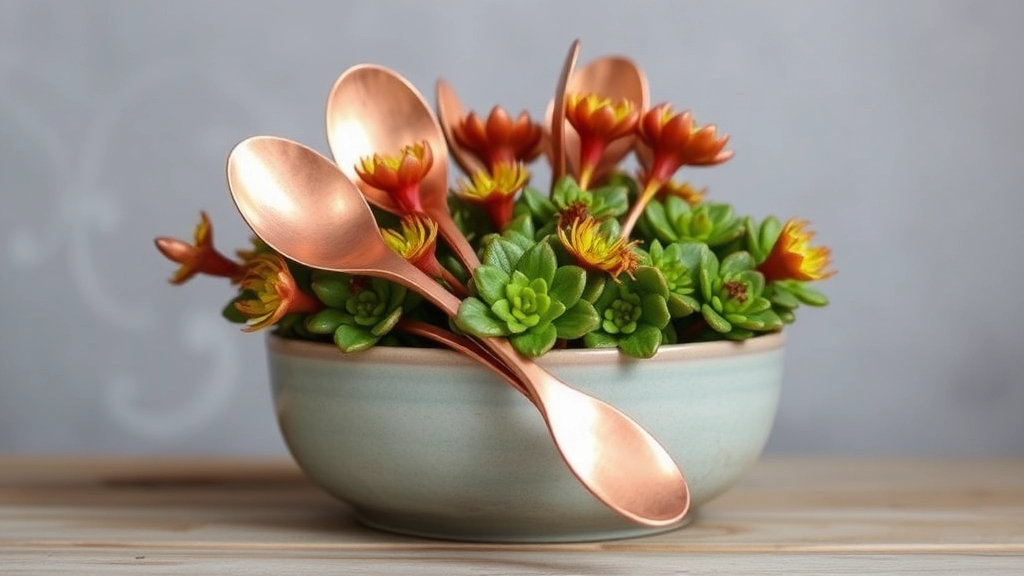Growing Kalanchoe Copper Spoons
When it comes to growing Kalanchoe Copper Spoons, understanding the right conditions is key. This unique succulent thrives in well-draining soil and prefers a mix that mimics its natural habitat. Ensuring proper sunlight is crucial, as these plants love bright, indirect light but can suffer under harsh, direct sun.
Watering your Kalanchoe Copper Spoons correctly can make or break your plant’s health. Overwatering is a common mistake, so it’s best to let the soil dry out completely between waterings. Additionally, knowing how to propagate these succulents can expand your collection effortlessly. Keep reading to dive deeper into the care and maintenance of this fascinating plant.
When considering adding Kalanchoe Copper Spoons to your plant collection, you might wonder what conditions are ideal for their growth.
These charming succulents thrive in environments that mimic their native habitats, which are typically warm and dry.
### Key Growing Conditions:
– **Light**: They prefer bright, indirect sunlight. Too much direct sun can scorch their leaves, while insufficient light can hinder their growth.
– **Temperature**: Kalanchoe Copper Spoons flourish in temperatures between 18°C to 24°C (65°F to 75°F). They can tolerate slightly cooler temperatures but should be protected from frost.
– **Humidity**: Low humidity levels are preferable. These plants are adapted to arid conditions, making them less susceptible to diseases associated with high humidity.
– **Air Circulation**: Good airflow is essential to prevent mold and fungal issues. Avoid overcrowding your plants to ensure they receive adequate ventilation.
For more detailed care instructions, you can refer to this [complete guide to kalanchoe plant care](https://planthq.org/complete-guide-to-kalanchoe-plant-care/). Additionally, if you’re interested in propagation techniques, check out this [step-by-step guide on kalanchoe propagation from leaves](https://planthq.org/stepbystep-guide-kalanchoe-propagation-from-leaves/).
Sunlight Requirements: Balancing Light and Shade
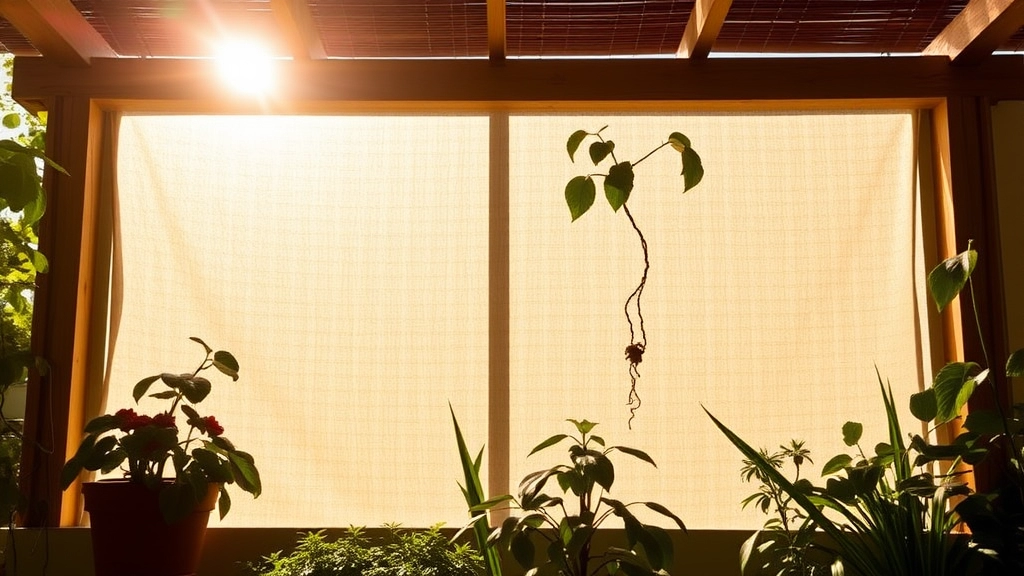
When it comes to caring for Kalanchoe Copper Spoons, one of the biggest concerns is sunlight.
Are you worried about giving your plant too much or too little light?
Finding that sweet spot can be tricky, but it’s essential for your plant’s health.
The Right Amount of Sunlight
Kalanchoe Copper Spoons thrive best in bright, indirect sunlight.
Here’s what you need to know:
- Direct Sunlight: While they can handle some direct sun, too much can scorch those beautiful leaves.
- Shady Spots: If they’re in a dim area, they might grow leggy and lose their vibrant colour.
So, aim for a balance.
Ideal Placement
- Near a Window: A south or east-facing window is ideal.
- Filtered Light: You can use sheer curtains to soften the sunlight.
- Rotate Regularly: To ensure even growth, rotate your plant every couple of weeks.
Signs of Stress
Keep an eye on your Copper Spoons.
- Too Much Light: Look for crispy, brown leaf edges.
- Too Little Light: Watch for pale leaves and slow growth.
By observing these signs, you can adjust their location as needed.
Seasonal Changes
Remember, the seasons change the amount of light your plant gets.
In winter, you might need to move them closer to the window for that extra boost.
Watering Needs: Avoiding Overwatering and Root Rot
When it comes to caring for Kalanchoe Copper Spoons, the right watering technique is crucial. Many succulent enthusiasts worry about overwatering, and rightly so, as it can lead to root rotâa common issue that can quickly spell disaster for your plant.
Understanding Watering Needs
Kalanchoe Copper Spoons thrive in dry conditions, so here are some essential tips to ensure you’re watering correctly:
Ideal Soil Mix for Kalanchoe Copper Spoons
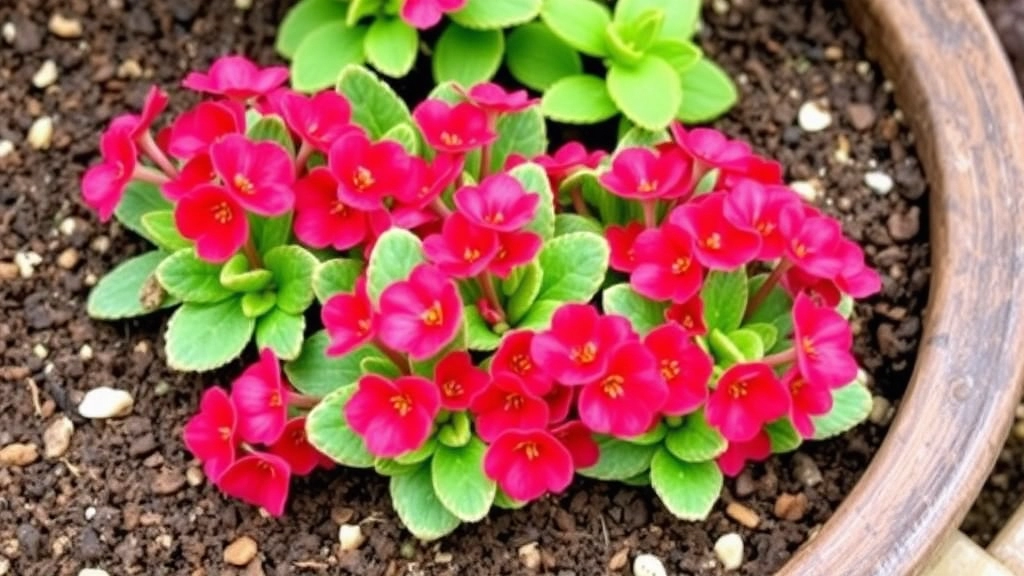
When it comes to cultivating Kalanchoe Copper Spoons, the right soil mix is essential for their health and growth.
Why Does Soil Matter?
Using the correct soil ensures proper drainage and aeration, which are crucial for preventing root rot.
Ideal Soil Composition:
To create the perfect environment for your Copper Spoons, consider the following components:
- Cactus Mix: Start with a high-quality cactus or succulent potting mix. These are designed to drain well.
- Perlite or Pumice: Add 20-30% perlite or pumice to improve drainage and aeration. This helps prevent water from sitting around the roots.
- Coarse Sand: Incorporating coarse sand can further enhance drainage. Aim for about 10-15% of the mix.
- Organic Matter: A small amount of organic matter, like compost, can provide nutrients without retaining too much moisture. Use sparingly.
Mixing It Up:
Combine these elements in a clean container. A good ratio could be:
- 50% cactus mix
- 30% perlite or pumice
- 20% coarse sand
This blend will create a well-draining, aerated environment that Copper Spoons thrive in.
Testing the Soil:
Before planting, check if the mix drains well. A simple test is to pour water into the mix and see how quickly it drains. It should not pool on the surface.
Fertilization Practices for Optimal Growth
When it comes to nurturing your Kalanchoe Copper Spoons, fertilization plays a pivotal role in ensuring robust growth and vibrant foliage. You might be wondering, “How often should I fertilize my Copper Spoons?” or “What type of fertilizer is best for succulents?” Let’s delve into the essentials.
Understanding Fertilization Needs
Kalanchoe Copper Spoons thrive on minimal fertilization, as excessive nutrients can lead to weak growth. Here’s how to strike the right balance:
- Frequency: Fertilize during the growing season, typically from spring to early autumn, every 4-6 weeks.
- Type of Fertilizer: Use a balanced, water-soluble fertilizer with a ratio of 10-10-10 or a specialized succulent fertilizer.
- Dilution: Always dilute the fertilizer to half strength to prevent root burn.
Signs of Nutritional Deficiency
Keep an eye out for signs that your Copper Spoons may need a nutrient boost:
How to Propagate Kalanchoe Copper Spoons
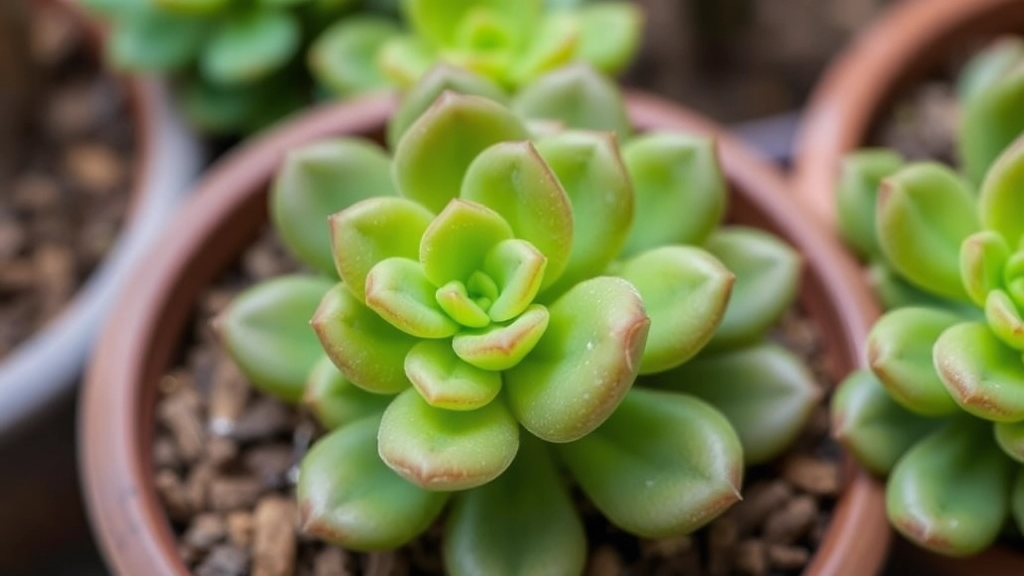
So, you’ve got your Kalanchoe Copper Spoons thriving, and now you’re wondering how to share the love, right? Propagating these beauties is easier than you might think, and it’s a fantastic way to expand your succulent collection without breaking the bank.
Methods of Propagation
There are two main ways to propagate Kalanchoe Copper Spoons:
- Leaf Cuttings
- Choose healthy, plump leaves from the parent plant.
- Gently twist or cut the leaf off, making sure to leave a clean edge.
- Let the leaf callous over for a day or two to prevent rot.
- Place the leaf on well-draining soil, keeping it slightly moist.
- In a few weeks, you should see roots and tiny new plants forming.
- Offsets
- Look for small offsets or pups growing at the base of the plant.
- Carefully remove them with a clean knife, ensuring some roots are attached.
- Plant the offsets in their own pots with the right soil mix.
- Water lightly and watch them grow!
Tips for Success
- Timing: Spring or early summer is the best time for propagation when the plant is actively growing.
- Humidity: A bit of humidity can help cuttings root faster. Consider covering them with a plastic bag or using a mini greenhouse.
- Patience: It may take a few weeks for roots to develop, so don’t rush the process.
By propagating Kalanchoe Copper Spoons, you not only get to enjoy more of these stunning plants but also have the opportunity to gift them to friends or trade with fellow plant lovers.
Seasonal Care and Temperature Considerations for Kalanchoe Copper Spoons
As we delve into the seasonal care and temperature considerations for Kalanchoe Copper Spoons, it’s essential to understand how these factors influence the overall health of your plant.
Understanding Seasonal Changes
Kalanchoe Copper Spoons thrive best when their seasonal needs are met. Here are some key considerations:
- Spring and Summer:
- During these warmer months, your Copper Spoons will benefit from increased sunlight and warmth.
- Aim for temperatures between 20°C to 30°C (68°F to 86°F).
- Keep an eye on humidity; these plants prefer a drier atmosphere.
- Autumn and Winter:
- As temperatures drop, ideally maintain a range of 10°C to 15°C (50°F to 59°F).
- Reduce watering during this period to prevent root rot, as the plant enters a dormant phase.
- Ensure they receive adequate light, even if it’s indirect, to keep them healthy.
Temperature Sensitivity
Kalanchoe Copper Spoons can be sensitive to extreme temperatures. Here are some tips to keep them safe:
Preventing and Managing Common Pests
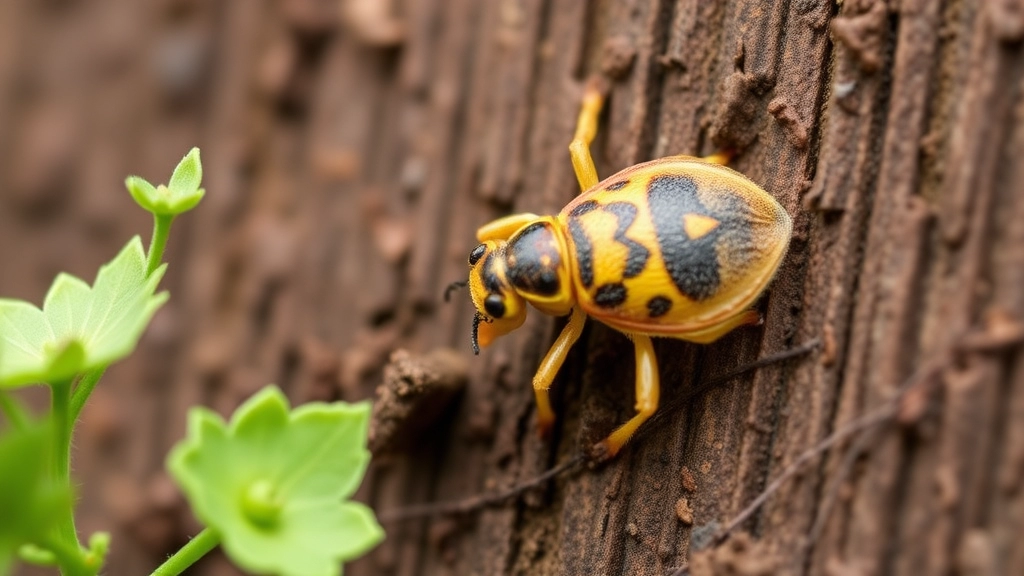
So, you’ve got your Kalanchoe Copper Spoons thriving, but what happens when those pesky pests come knocking?
Common Pests to Watch For:
- Mealybugs: These little white fluff balls love to hide in the nooks of your plant.
- Spider Mites: Tiny and sneaky, they can cause damage before you even notice them.
- Aphids: Small but mighty, they can suck the life out of your leaves.
Preventive Measures:
- Regular Inspections: Check your plants weekly. Look under leaves and around stems.
- Cleanliness: Keep your plant area tidy. Remove fallen leaves and debris.
- Air Circulation: Ensure your plants aren’t crammed together. Good airflow helps deter pests.
Managing Infestations:
- Soap Solution: Mix water with a few drops of dish soap. Spray on affected areas; it suffocates the pests.
- Neem Oil: A natural remedy that repels pests. Just mix with water and spray.
- Isolate Infested Plants: If you spot pests, move the affected plant away from others to prevent spreading.
Signs of Trouble:
- Yellowing leaves? Check for pests.
- Sticky residue? That’s honeydew from aphids.
Pruning and Shaping for Aesthetic Appeal
When it comes to maintaining the beauty of your Kalanchoe Copper Spoons, pruning and shaping play a vital role. You may wonder how to keep your plant looking its best while promoting healthy growth.
Why Prune?
Pruning serves multiple purposes:
- Encourages Growth: Removing dead or damaged leaves stimulates new growth.
- Enhances Shape: Regular pruning helps maintain a compact, attractive form.
- Prevents Overcrowding: Ensures adequate air circulation, reducing the risk of pests and diseases.
When to Prune?
Timing is crucial for effective pruning:
- Spring: Ideal for major pruning, as the plant is entering its active growth phase.
- Summer: Light pruning can be done to maintain shape.
- Autumn and Winter: Avoid heavy pruning during dormancy.
How to Prune Your Kalanchoe Copper Spoons
Follow these simple steps for effective pruning:
- Gather Tools: Use clean, sharp scissors or pruning shears.
- Identify Problem Areas: Look for dead, yellowing, or damaged leaves.
- Make Clean Cuts: Trim leaves close to the stem without damaging healthy foliage.
- Shape the Plant: If desired, lightly trim the tips of healthy leaves to encourage a fuller appearance.
Tips for Shaping Your Plant
To enhance the aesthetic appeal of your Copper Spoons:
- Consider Height: Trim taller stems to encourage a bushier look.
- Balance: Ensure even distribution of leaves for a symmetrical appearance.
- Remove Offshoots: If your plant produces offsets, consider removing them for propagation or to maintain shape.
For more detailed guidance, check out our essential tips for optimal growth and learn step-by-step leaf propagation techniques.
Dealing with Common Diseases in Kalanchoe Orgyalis
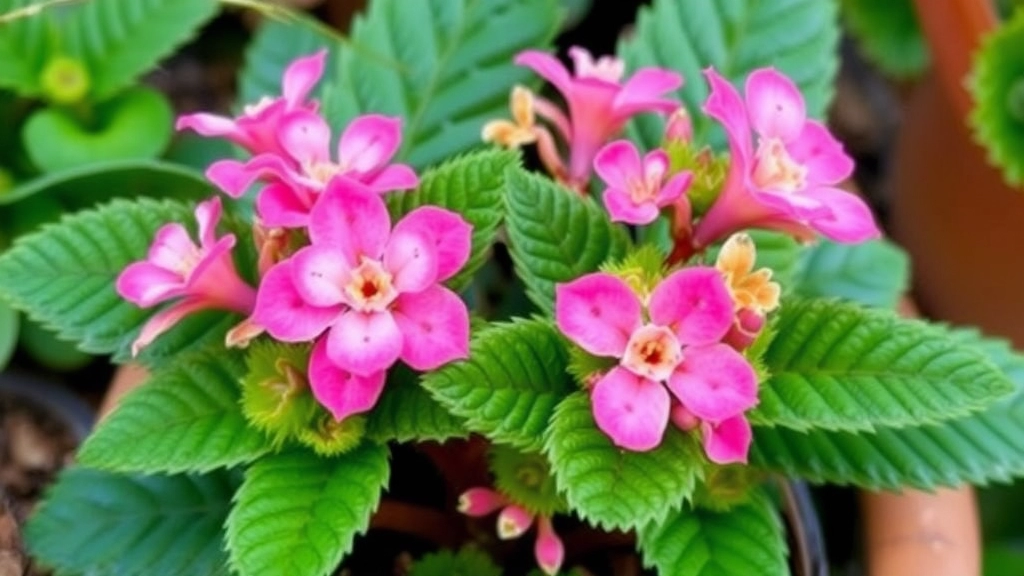
So, you’ve got your Kalanchoe Copper Spoons thriving, but what happens when things take a turn for the worse?
Common diseases can pop up and ruin your succulent’s vibe if you’re not careful.
Here’s what to watch out for:
- Leaf Spot: This sneaky disease shows up as dark spots on leaves. It usually means your plant’s been overwatered or is sitting in damp conditions.
- Powdery Mildew: A white, powdery coating on leaves? That’s powdery mildew. It thrives in high humidity and poor air circulation.
- Root Rot: If your plant starts drooping and the leaves turn mushy, root rot might be the culprit. This often happens from overwatering or using the wrong soil mix.
How to Tackle These Issues:
- Leaf Spot:
- Remove affected leaves.
- Ensure good air circulation.
- Adjust your watering schedule.
- Powdery Mildew:
- Increase air circulation around your plants.
- Spray a mixture of water and baking soda to help treat it.
- Root Rot:
- Take your plant out of its pot and inspect the roots.
- Trim away any black, mushy roots.
- Repot in fresh, dry soil.
Prevention Tips:
- Make sure your pots have drainage holes.
- Avoid letting your plant sit in water.
- Keep an eye on humidity levels.
Benefits of Adding Copper Spoons to Your Succulent Collection
Have you ever wondered why Kalanchoe Copper Spoons are such a popular choice among succulent enthusiasts?
These unique plants offer a range of benefits that make them a fantastic addition to any collection.
Visual Appeal
- Striking Appearance: The thick, spoon-shaped leaves have a captivating silvery-green hue, adding a distinctive touch to your plant display.
- Variety in Texture: Their unique texture contrasts beautifully with other succulents, creating an engaging visual landscape.
Low Maintenance
- Easy Care: Copper Spoons thrive on minimal attention, making them perfect for both novice and seasoned plant owners. For more detailed care tips, check out our expert tips on Kalanchoe care.
- Drought Tolerance: These plants are resilient, requiring less frequent watering compared to many other houseplants.
Air Quality Improvement
- Natural Air Purifiers: Like many succulents, Copper Spoons help improve indoor air quality by filtering toxins and releasing oxygen.
Propagation Potential
- Simple Propagation: Their ease of propagation means you can expand your collection or share with friends effortlessly. Learn more about how to propagate Kalanchoe.
- Gift Ideas: Propagated plants make thoughtful gifts for fellow plant lovers.
Versatile Placement
- Indoor and Outdoor: Copper Spoons adapt well to various environments, whether placed on a sunny windowsill or in a garden bed.
- Decorative Options: Their aesthetic appeal allows for creative arrangements in pots, terrariums, or even hanging displays.
Educational Value
- Learning Opportunity: Caring for Kalanchoe Copper Spoons can enhance your knowledge of succulent care, enriching your gardening skills.
FAQs on Kalanchoe Copper Spoons
What kind of sunlight does Kalanchoe Copper Spoons need?
Kalanchoe Copper Spoons thrive best in bright, indirect sunlight. They can handle some direct sun, but too much can scorch the leaves. Conversely, too little light can make the plant grow leggy and lose its vibrant colour.
Where should I place my Kalanchoe Copper Spoons?
Ideal placement includes near a south or east-facing window. Using sheer curtains to filter the light is beneficial, and rotating the plant every couple of weeks ensures even growth.
What soil mix is best for Kalanchoe Copper Spoons?
A well-draining soil mix is crucial. A good blend includes 50% cactus mix, 30% perlite or pumice, and 20% coarse sand. This combination ensures proper drainage and aeration, preventing root rot.
How do I propagate Kalanchoe Copper Spoons?
There are two main methods: leaf cuttings and offsets. For leaf cuttings, choose healthy leaves, let them callous, and place them on well-draining soil. For offsets, remove small pups growing at the base of the plant and plant them in their own pots.
What are the common pests that affect Kalanchoe Copper Spoons?
Common pests include mealybugs, spider mites, and aphids. Regular inspections, cleanliness, and good air circulation can help prevent infestations.
How do I manage pest infestations on my Kalanchoe Copper Spoons?
Use a soap solution or neem oil to treat affected areas. Isolate infested plants to prevent spreading. Regularly check for signs like yellowing leaves or sticky residue.
What diseases should I watch out for in Kalanchoe Copper Spoons?
Common diseases include leaf spot, powdery mildew, and root rot. Leaf spot appears as dark spots on leaves, powdery mildew as a white coating, and root rot causes drooping and mushy leaves.
How can I prevent and manage diseases in Kalanchoe Copper Spoons?
For leaf spot, remove affected leaves and ensure good air circulation. For powdery mildew, increase air circulation and use a water-baking soda spray. For root rot, trim away affected roots and repot in fresh soil. Ensure pots have drainage holes and avoid overwatering.
References
-
Gardening Know How: Kalanchoe Copper Spoons Care
-
The Spruce: How to Grow and Care for Kalanchoe
-
Houseplant411: Kalanchoe Copper Spoon Plant – How to Grow & Care Tips
